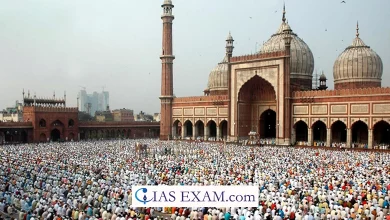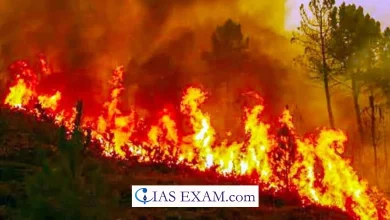
Context
India Meteorological Department (IMD) has forecast ‘above normal’ rains in the country after a gap of eight years.
About
- The IMD has expected that the country will acquire 106% of the long-term average rainfall (LPA) this season, with a model error of approximately 5%.
- The LPA for the duration between June and September is 87 centimeters (870 mm), and is calculated as the average rainfall between 1971-2020.
- By this calculation, it means that there could be 92.2 cm of rainfall throughout India.
IMD Categorisation Method of Monsoon
- Long Period Average (LPA): LPA of rainfall is the rainfall recorded over a specific location for a given interval (like month or season) averaged over a long period of 30 years, 50-years and so on.
- It acts as a benchmark whilst forecasting the quantitative rainfall for that area for a particular month or season.
Categories of Rainfall
- Large Excess: ≥60% of LPA.
- Excess: 20% to 59% of LPA.
- Normal: -19% to +19% of LPA.
- Deficient: -59% to -20% of LPA.
- Large Deficient: – 99% to -60% LPA.
Predicting the Monsoon
- Monsoon season is from June to September in India as a whole, the long period average (LPA) is 88 cm and recent deviation is 9 cm (approximately 10% of imply cost).
- Therefore, whilst the rainfall averaged over the country as a whole is within ±10% from its LPA or 90% to 110% of LPA, the rainfall is stated to be ‘normal’ and while the rainfall is <90% of LPA it is considered to be ‘below normal’ and when it is >110% of LPA, the rainfall is stated to be ‘above normal’.
Factors Influencing the Forecast
- Retreat of El Nino, and Favourable La Nina Conditions: El Nino conditions, presently prevailing over the equatorial Pacific location and usually chargeable for warmer temperatures in many places around the arena along with in India, were probable to weaken to neutral El Nino Southern Oscillation (ENSO) conditions for the duration of the early part of the monsoon season.
- The warming phase of the ENSO cycle is known as El Nino and its cooling phase as La Nina.
- La Nina conditions are in all likelihood to increase during the second half of the monsoon season.
- It is characterised by the unusual cooling of the central and east-central equatorial Pacific Ocean.
- Other key factors influencing the Indian monsoon are Positive Indian Ocean Dipole (IOD), and Reduced Snow Cover in the Northern Hemisphere.
Indian Monsoon
- The term ‘monsoon’ is derived from the Arabic word ‘mausim’, because of this season. Monsoons are characterised by a seasonal reversal of wind course.
- The onset and retreat of the monsoon have profound implications for the country’s climate, agriculture, and economy.
Monsoon Onset (Arrival)
- The winds blow from the South-West at some point of the summer months (June to September).
- It generally arrives within the southern state of Kerala across the first week of June and gradually progresses northwards, covering the entire country by mid-July.
- The IMD officially announces the onset of the monsoon primarily based on particular criteria, which include rainfall, wind area, and Outgoing Longwave Radiation (OLR) values.
Monsoon Progress
- After its onset over Kerala, the monsoon progresses northwards and covers the whole country in approximately a month and a half.
- The progress of the monsoon is closely monitored because it has great implications for agriculture, mainly the sowing of kharif (monsoon) plants.
Monsoon Retreat (Withdrawal)
- It marks the transition from the wet season to the dry winter season.
- The monsoon begins to retreat from the northwestern states of India around early September and withdraws absolutely from the country by early October.
- The retreat of the monsoon is not as abrupt as its onset.
Impact on Agriculture and Economy
- The Indian summer time monsoon plays a crucial function in India’s agriculture and impacts the livelihood of a 5th of the sector’s population.
- About 80% (about 70% from south – west department of monsoon) of the annual precipitation over India happens throughout the summer time period, presenting water to plants throughout the top agricultural season.
- The southwest monsoon Agriculture debts for about 14% of the usa’s GDP.
Source: The Indian Express
UPSC Prelims Practice Question
Q.Consider the following statements: (2012)
- The duration of the monsoon decreases from southern India to northern India.
- The amount of annual rainfall in the northern plains of India decreases from east to west.
Which of the statements given above is/are correct?
(a) 1 only (b) 2 only
(c) Both 1 and 2 (d) Neither 1 nor 2
Ans: (c)





.png)



